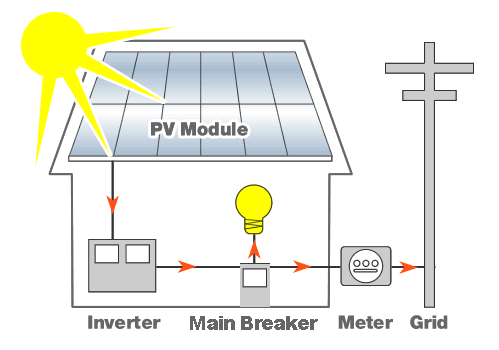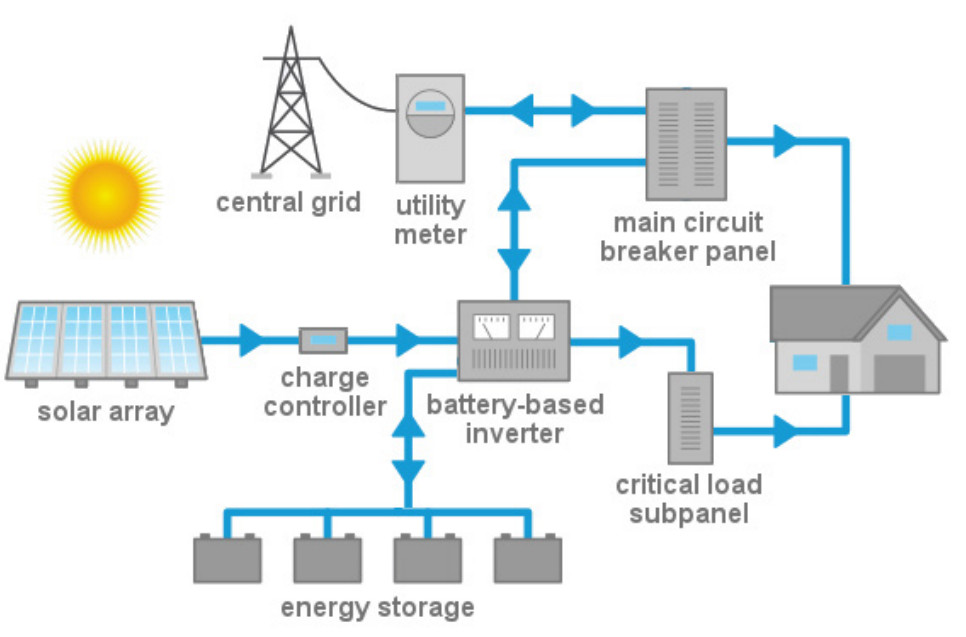Also known as a grid-connected photovoltaic system, a typical residential solar energy system is what will be discussed on this page.
One of the great things about PV systems is how simple they actually are. There are only a few components involved and the system is basically maintenance-free once it is installed.
While there are many different types and brands of products that are available that solar contractors use in their installations, the basic idea remains the same.
1. A PV system starts with solar panels that are mounted to a roof using stainless steel mounting hardware and racks. The panels use the suns light to create DC (direct current) energy.

2. Wiring takes the DC electricity to an inverter placed on the side of the house. The inverter converts the DC electricity to AC (alternating current) electricity that homes are wired to use.
3. From the inverter, electricity is sent to the main breaker box. Energy is then sent to both your smart meter and the appliances in your home.
4. Excess energy is sent to the grid. This energy powers homes nearby. The owner of the PV system gets credit for this extra energy through net metering.

An increasing number of solar panel installations will include an energy storage system. While this setup may not be commonplace now (mid 2016), we can expect to see a considerable increase in the implementation of battery storage systems as their costs continue to fall in the coming years. Go to the solar power storage page for more information about the benefits of a solar plus storage setup.

